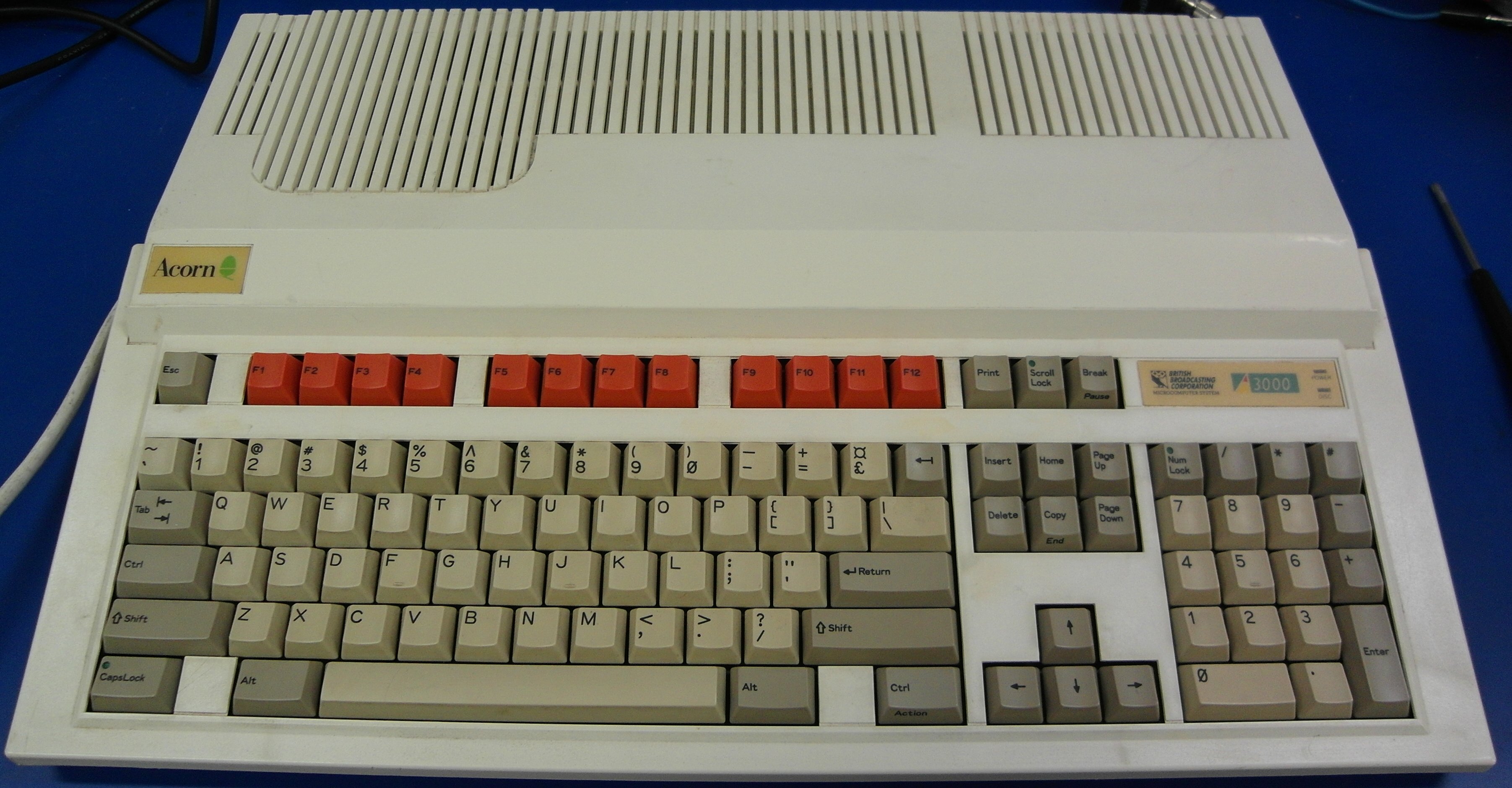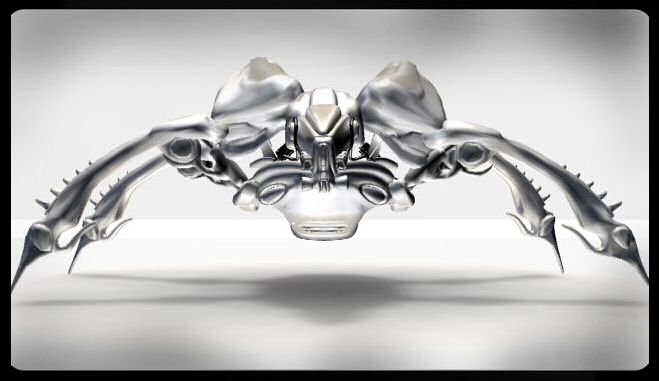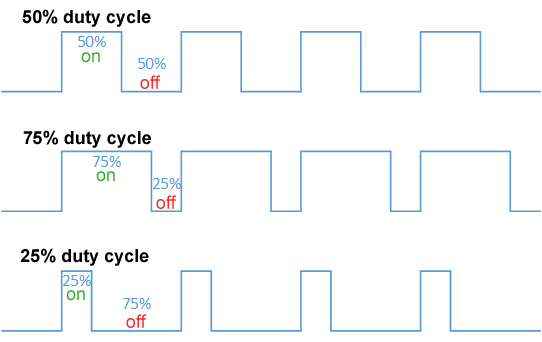|
VIDC1
The VIDC1 was a Video Display Controller chip created as an accompanying chip to the ARM CPU used in Acorn Archimedes computer systems. Its successor, the VIDC20, was later used in RiscPCs. Video The VIDC1 offers colour depths of 1, 2, 4 or eight bits per colour, allowing for 2, 4, 16 and 256 colour displays (the VIDC20 can offer up to approximately 16 million colours). A colour lookup table or palette register set of 16 12-bit words was provided, offering a range of 4096 colours for each of the colours in those displays or modes employing up to 16 colours. The 12 bits were split in three 4-bit RGB values, with a 4-bit high speed D/A converter for each of the three primary colours. However, in 256 colour modes, 4 bits of the colour data were hardware derived and could not be adjusted. The net result was 256 colours, covering a range of the 4096 available colours. Since the device had no horizontal sync interrupt, it was difficult to display additional colours by changing the pal ... [...More Info...] [...Related Items...] OR: [Wikipedia] [Google] [Baidu] |
Acorn Archimedes
Acorn Archimedes is a family of personal computers designed by Acorn Computers of Cambridge, Cambridge, England. The systems are based on Acorn's own ARM architecture processors and the proprietary operating systems Arthur and RISC OS. The first models were introduced in 1987, and systems in the Archimedes family were sold until the mid-1990s. ARM's Reduced instruction set computer, RISC design, a 32-bit CPU (using 26-bit addressing), running at 8 Hertz, MHz, was stated as achieving 4.5+ Million instructions per second, MIPS, which provided a significant upgrade from 8-bit home computers, such as Acorn's previous machines. Claims of being the fastest micro in the world and running at 18 MIPS were also made during tests. Two of the first models—the A305 and A310—were given the BBC branding, with BBC Worldwide, BBC Enterprises regarding the machines as "a continuing part of the original computer literacy project". Dissatisfaction with the branding arrangement was ... [...More Info...] [...Related Items...] OR: [Wikipedia] [Google] [Baidu] |
VIDC20
The VIDC20 was a video display controller chip created as an accompanying chip to the ARM CPU as used in RiscPC computer systems. A simpler version of the VIDC20, the VIDC1, was used in the earlier Acorn Archimedes Acorn Archimedes is a family of personal computers designed by Acorn Computers of Cambridge, England. The systems are based on Acorn's own ARM architecture processors and the proprietary operating systems Arthur and RISC OS. The first mode ... computers. A VIDC20 chip controls both the computer's video and sound. The data is read from the 64-bit ARM data bus using DMA control and then processed and converted into the necessary analogue signals to drive the video output displays and sound system. The VIDC20 can handle many more display and sound formats than the original VIDC1 chip found in the Archimedes hardware. It can also read data from VRAM if installed in the machine, otherwise it reads from DRAM. Video Data from the video buffer is converted and proces ... [...More Info...] [...Related Items...] OR: [Wikipedia] [Google] [Baidu] |
Video Display Controller
A video display controller or VDC (also called a display engine or display interface) is an integrated circuit which is the main component in a video-signal generator, a device responsible for the production of a TV video signal in a computing or game system. Some VDCs also generate an audio signal, but that is not their main function. VDCs were used in the home computers of the 1980s and also in some early video picture systems. The VDC is the main component of the video signal generator logic, responsible for generating the timing of video signals such as the horizontal and vertical synchronization signals and the blanking interval signal. Sometimes other supporting chips were necessary to build a complete system, such as RAM to hold pixel data, ROM to hold character fonts, or some discrete logic such as shift registers. Most often the VDC chip is completely integrated in the logic of the main computer system, (its video RAM appears in the memory map of the main CPU), bu ... [...More Info...] [...Related Items...] OR: [Wikipedia] [Google] [Baidu] |
Demoscene
The demoscene is an international computer art subculture focused on producing demos: self-contained, sometimes extremely small, computer programs that produce audiovisual presentations. The purpose of a demo is to show off programming, visual art, and musical skills. Demos and other demoscene productions (graphics, music, videos, games) are shared at festivals known as demoparties, voted on by those who attend and released online. The scene started with the home computer revolution of the early 1980s, and the subsequent advent of software cracking. Crackers altered the code of video games to remove copy protection, claiming credit by adding introduction screens of their own (" cracktros"). They soon started competing for the best visual presentation of these additions. Through the making of intros and stand-alone demos, a new community eventually evolved, independent of the gaming and software sharing scenes. Demoscene productions can be made with the latest consumer techno ... [...More Info...] [...Related Items...] OR: [Wikipedia] [Google] [Baidu] |
Graphics Chips
A video display controller or VDC (also called a display engine or display interface) is an integrated circuit which is the main component in a video-signal generator, a device responsible for the production of a TV video signal in a computing or game system. Some VDCs also generate an audio signal, but that is not their main function. VDCs were used in the home computers of the 1980s and also in some early video picture systems. The VDC is the main component of the video signal generator logic, responsible for generating the timing of video signals such as the horizontal and vertical synchronization signals and the blanking interval signal. Sometimes other supporting chips were necessary to build a complete system, such as RAM to hold pixel data, ROM to hold character fonts, or some discrete logic such as shift registers. Most often the VDC chip is completely integrated in the logic of the main computer system, (its video RAM appears in the memory map of the main CPU) ... [...More Info...] [...Related Items...] OR: [Wikipedia] [Google] [Baidu] |
Pulse-width Modulation
Pulse-width modulation (PWM), or pulse-duration modulation (PDM), is a method of reducing the average power delivered by an electrical signal, by effectively chopping it up into discrete parts. The average value of voltage (and current) fed to the load is controlled by turning the switch between supply and load on and off at a fast rate. The longer the switch is on compared to the off periods, the higher the total power supplied to the load. Along with maximum power point tracking (MPPT), it is one of the primary methods of reducing the output of solar panels to that which can be utilized by a battery. PWM is particularly suited for running inertial loads such as motors, which are not as easily affected by this discrete switching, because their inertia causes them to react slowly. The PWM switching frequency has to be high enough not to affect the load, which is to say that the resultant waveform perceived by the load must be as smooth as possible. The rate (or frequency) a ... [...More Info...] [...Related Items...] OR: [Wikipedia] [Google] [Baidu] |
Logarithmic Scale
A logarithmic scale (or log scale) is a way of displaying numerical data over a very wide range of values in a compact way—typically the largest numbers in the data are hundreds or even thousands of times larger than the smallest numbers. Such a scale is nonlinear: the numbers 10 and 20, and 60 and 70, are not the same distance apart on a log scale. Rather, the numbers 10 and 100, and 60 and 600 are equally spaced. Thus moving a unit of distance along the scale means the number has been ''multiplied'' by 10 (or some other fixed factor). Often exponential growth curves are displayed on a log scale, otherwise they would increase too quickly to fit within a small graph. Another way to think about it is that the ''number of digits'' of the data grows at a constant rate. For example, the numbers 10, 100, 1000, and 10000 are equally spaced on a log scale, because their numbers of digits is going up by 1 each time: 2, 3, 4, and 5 digits. In this way, adding two digits ''multiplies'' the ... [...More Info...] [...Related Items...] OR: [Wikipedia] [Google] [Baidu] |
Sprite (computer Graphics)
Sprite commonly refers to: * Sprite (drink), a lemon-lime beverage produced by the Coca-Cola Company * Sprite (computer graphics), a smaller bitmap composited onto another by hardware or software * Sprite (folklore), a type of legendary creature including elves, fairies, and pixies Sprite may also refer to: Comics *Sprite (Eternal), a fictional member of the race of Eternals in the Marvel Universe * ''Sprite'' (manga), a 2009 Japanese manga series *Sprite, alias of the Marvel Comics character Kitty Pryde *Sprite comic, a webcomic that consists primarily of computer sprites from video games Computing and technology * Sprite (operating system), an operating system developed at the University of California, Berkeley * SPRITE (spacecraft), a proposed Saturn atmospheric probe mission * SPRITE infrared detector, a specialist detector device using a process known as signal processing in the element * De Havilland Sprite, a British rocket engine Vehicles * Sprite (motorcycle), a ... [...More Info...] [...Related Items...] OR: [Wikipedia] [Google] [Baidu] |
Dither
Dither is an intentionally applied form of image noise, noise used to randomize quantization error, preventing large-scale patterns such as color banding in images. Dither is routinely used in processing of both digital audio and digital video, video data, and is often one of the last stages of Audio mastering, mastering audio to a compact disc, CD. A common use of dither is converting a grayscale image to Binary image, black and white, such that the density of black dots in the new image approximates the average gray level in the original. Etymology The term ''dither'' was published in books on analog computation and hydraulically controlled guns shortly after World War II. Though he did not use the term ''dither'', the concept of dithering to reduce quantization patterns was first applied by Lawrence G. Roberts in his 1961 MIT master's thesis and 1962 article. By 1964 dither was being used in the modern sense described in this article. The technique was in use at least ... [...More Info...] [...Related Items...] OR: [Wikipedia] [Google] [Baidu] |
Digital-to-analog Converter
In electronics, a digital-to-analog converter (DAC, D/A, D2A, or D-to-A) is a system that converts a digital signal into an analog signal. An analog-to-digital converter (ADC) performs the reverse function. There are several DAC architectures; the suitability of a DAC for a particular application is determined by figures of merit including: resolution, maximum sampling frequency and others. Digital-to-analog conversion can degrade a signal, so a DAC should be specified that has insignificant errors in terms of the application. DACs are commonly used in music players to convert digital data streams into analog audio signals. They are also used in televisions and mobile phones to convert digital video data into analog video signals. These two applications use DACs at opposite ends of the frequency/resolution trade-off. The audio DAC is a low-frequency, high-resolution type while the video DAC is a high-frequency low- to medium-resolution type. Due to the complexity a ... [...More Info...] [...Related Items...] OR: [Wikipedia] [Google] [Baidu] |
Horizontal Sync
Horizontal scan rate, or horizontal frequency, usually expressed in kilohertz, is the number of times per second that a raster-scan video system transmits or displays a complete horizontal line, as opposed to vertical scan rate The refresh rate (or "vertical refresh rate", "vertical scan rate", terminology originating with the cathode ray tubes) is the number of times per second that a raster-based display device displays a new image. This is independent from frame rate ..., the number of times per second that an entire screenful of image data is transmitted or displayed. Cathode ray tubes Within a CRT, the horizontal scan rate is how many times in a second that the electron beam moves from the left side of the display to the right and back. The number of horizontal lines displayed per second can be roughly derived from this number multiplied by the vertical scan rate. The horizontal scan frequencies of a CRT include some intervals that occur during the vertical blanking int ... [...More Info...] [...Related Items...] OR: [Wikipedia] [Google] [Baidu] |
ARM Architecture
ARM (stylised in lowercase as arm, formerly an acronym for Advanced RISC Machines and originally Acorn RISC Machine) is a family of reduced instruction set computer (RISC) instruction set architectures for computer processors, configured for various environments. Arm Ltd. develops the architectures and licenses them to other companies, who design their own products that implement one or more of those architectures, including system on a chip (SoC) and system on module (SOM) designs, that incorporate different components such as memory, interfaces, and radios. It also designs cores that implement these instruction set architectures and licenses these designs to many companies that incorporate those core designs into their own products. There have been several generations of the ARM design. The original ARM1 used a 32-bit internal structure but had a 26-bit address space that limited it to 64 MB of main memory. This limitation was removed in the ARMv3 series, which ... [...More Info...] [...Related Items...] OR: [Wikipedia] [Google] [Baidu] |




